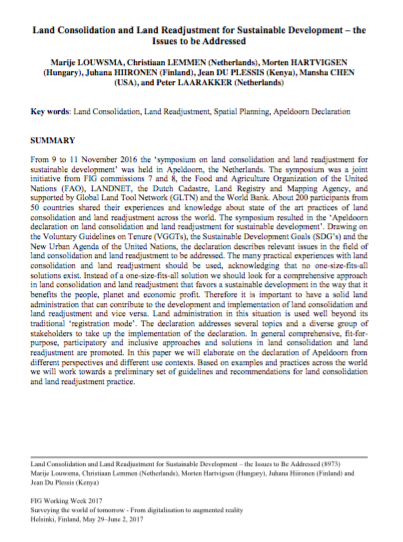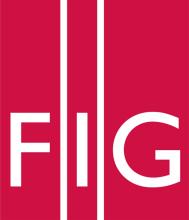Resource information
From 9 to 11 November 2016 the ‘symposium on land consolidation and land readjustment for sustainable development’ was held in Apeldoorn, the Netherlands. The symposium was a joint initiative from FIG commissions 7 and 8, the Food and Agriculture Organization of the United Nations (FAO), LANDNET, the Dutch Cadastre, Land Registry and Mapping Agency, and supported by Global Land Tool Network (GLTN) and the World Bank. About 200 participants from 50 countries shared their experiences and knowledge about state of the art practices of land consolidation and land readjustment across the world. The symposium resulted in the ‘Apeldoorn declaration on land consolidation and land readjustment for sustainable development’. Drawing on the Voluntary Guidelines on Tenure (VGGTs), the Sustainable Development Goals (SDG’s) and the New Urban Agenda of the United Nations, the declaration describes relevant issues in the field of land consolidation and land readjustment to be addressed. The many practical experiences with land consolidation and land readjustment should be used, acknowledging that no one-size-fits-all solutions exist. Instead of a one-size-fits-all solution we should look for a comprehensive approach in land consolidation and land readjustment that favors a sustainable development in the way that it benefits the people, planet and economic profit. Therefore it is important to have a solid land administration that can contribute to the development and implementation of land consolidation and land readjustment and vice versa. Land administration in this situation is used well beyond its traditional ‘registration mode’. The declaration addresses several topics and a diverse group of stakeholders to take up the implementation of the declaration. In general comprehensive, fit-for- purpose, participatory and inclusive approaches and solutions in land consolidation and land readjustment are promoted. In this paper we will elaborate on the declaration of Apeldoorn from different perspectives and different use contexts. Based on examples and practices across the world we will work towards a preliminary set of guidelines and recommendations for land consolidation and land readjustment practice.


